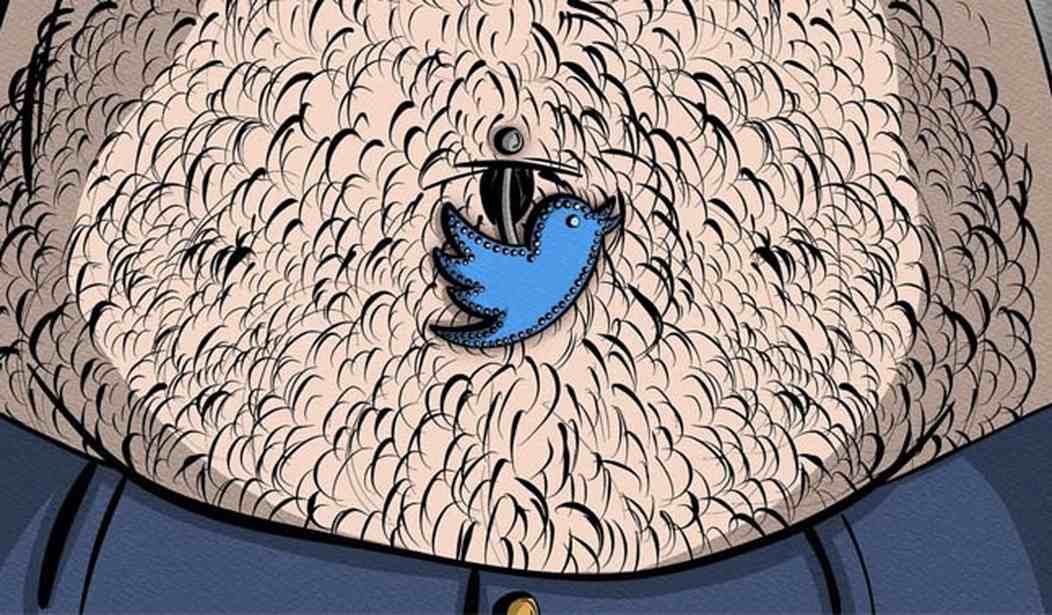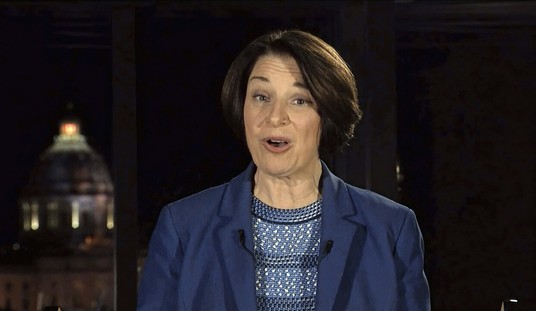Another edition of the Twitter Files, this one posted by Matt Taibbi. I’ve lost track of which installment this is but it might be number nine. Today’s report is once again about the FBI and how it gradually became a clearing house for official takedown requests from all over the place.
https://t.co/C7kGNwToWZ 2020, Twitter was struggling with the problem of public and private agencies bypassing them and going straight to the media with lists of suspect accounts.
— Matt Taibbi (@mtaibbi) January 3, 2023
4.The GEC flagged accounts as “Russian personas and proxies” based on criteria like, “Describing the Coronavirus as an engineered bioweapon,” blaming “research conducted at the Wuhan institute,” and “attributing the appearance of the virus to the CIA.” pic.twitter.com/a4xBotQZ2m
— Matt Taibbi (@mtaibbi) January 3, 2023
6.The GEC still led directly to news stories like the AFP’s headline, “Russia-linked disinformation campaign led to coronavirus alarm, US says,” and a Politico story about how “Russian, Chinese, Iranian Disinformation Narratives Echo One Another.” pic.twitter.com/iLEZVJ19rH
— Matt Taibbi (@mtaibbi) January 3, 2023
Twitter was clearly frustrated by the reports.
8.“WE’RE HAPPY TO WORK DIRECTLY WITH YOU ON THIS, INSTEAD OF NBC.” Roth tried in vain to convince outsider researchers like the Clemson lab to check with them before pushing stories about foreign interference to media. pic.twitter.com/AHg4DUbEql
— Matt Taibbi (@mtaibbi) January 3, 2023
10.When the State Department/GEC – remember this was 2020, during the Trump administration – wanted to publicize a list of 5,500 accounts it claimed would “amplify Chinese propaganda and disinformation” about COVID, Twitter analysts were beside themselves.
— Matt Taibbi (@mtaibbi) January 3, 2023
Twitter’s Yoel Roth saw the State Dept. activity as an attempt to “insert themselves” into content moderation.
12.Roth saw GEC’s move as an attempt by the GEC to use intel from other agencies to “insert themselves” into the content moderation club that included Twitter, Facebook, the FBI, DHS, and others: pic.twitter.com/h0AXfTswnI
— Matt Taibbi (@mtaibbi) January 3, 2023
This led to a public spat between State and Twitter.
14.The episode led to a rare public disagreement between Twitter and state officials: pic.twitter.com/iydnso8iuJ
— Matt Taibbi (@mtaibbi) January 3, 2023
16.Facebook, Google, and Twitter executives were united in opposition to GEC’s inclusion, with ostensible reasons including, “The GEC’s mandate for offensive IO to promote American interests.” pic.twitter.com/jvZxPYTIE6
— Matt Taibbi (@mtaibbi) January 3, 2023
Twitter tried to push back on the GEC’s efforts to insert itself, in part because they seemed to think they were too political.
18.After spending years rolling over for Democratic Party requests for “action” on “Russia-linked” accounts, Twitter was suddenly playing tough. Why? Because, as Roth put it, it would pose “major risks” to bring the GEC in, “especially as the election heats up.” pic.twitter.com/tAd6lVh2KH
— Matt Taibbi (@mtaibbi) January 3, 2023
20.Eventually the FBI argued, first to Facebook, for a compromise solution: other USG agencies could participate in the “industry” calls, but the FBI and DHS would act as sole “conduits.” pic.twitter.com/uJSFzqj52x
— Matt Taibbi (@mtaibbi) January 3, 2023
The FBI proposed a compromise.
22."STATE… NSA, and CIA" Chan reassured him it would be a “one-way” channel, and “State/GEC, NSA, and CIA have expressed interest in being allowed on in listen mode only.” pic.twitter.com/A2AfD3GHA3
— Matt Taibbi (@mtaibbi) January 3, 2023
Roth asked if the FBI would be the “belly button” for industry partners.
24.They eventually settled on an industry call via Signal. In an impressive display of operational security, Chan circulated private numbers of each company’s chief moderation officer in a Word Doc marked “Signal Phone Numbers,” subject-lined, “List of Numbers.” pic.twitter.com/5pTq7sfshh
— Matt Taibbi (@mtaibbi) January 3, 2023
26.Requests arrived and were escalated from all over: from Treasury, the NSA, virtually every state, the HHS, from the FBI and DHS, and more: pic.twitter.com/QYJBjPEJZW
— Matt Taibbi (@mtaibbi) January 3, 2023
In addition to government requests there were also personal ones, like this one from Rep. Adam Schiff complaining about QAnon. As you can see in the bold responses, Twitter said no.
28.“WE DON’T DO THIS” Even Twitter declined to honor Schiff’s request at the time. Sperry was later suspended, however. pic.twitter.com/9PX2Zw5Nzj
— Matt Taibbi (@mtaibbi) January 3, 2023
But most requests were rubber-stamped.
30.The GEC requests were what a former CIA staffer working at Twitter was referring to, when he said, “Our window on that is closing,” meaning they days when Twitter could say no to serious requests were over. pic.twitter.com/D0IrEgzC6e
— Matt Taibbi (@mtaibbi) January 3, 2023
32.“USIC" requests often simply began “We assess” and then provided lists (sometimes, in separate excel docs) they believed were connected to Russia’s Internet Research Agency and committing cyber ops, from Africa to South America to the U.S.: pic.twitter.com/wpdr7Cxa1n
— Matt Taibbi (@mtaibbi) January 3, 2023
34.Some reports were just a paragraph long and said things like: “The attached email accounts… were possibly used for “influence operations, social media collection, or social engineering.” Without further explanation, Twitter would be forwarded an excel doc: pic.twitter.com/aHVDM8xiAK
— Matt Taibbi (@mtaibbi) January 3, 2023
https://t.co/fYBi87heLK the weeks before the election in 2020, Twitter was so confused by the various streams of incoming requests, staffers had to ask the FBI which was which: pic.twitter.com/YtioUpzVw8
— Matt Taibbi (@mtaibbi) January 3, 2023
38.Wrote senior attorney Stacia Cardille: “My in-box is really f— up at this point.” pic.twitter.com/vMzd7fJzMn
— Matt Taibbi (@mtaibbi) January 3, 2023
40.For more on the #TwitterFiles, check out @BariWeiss, @ShellenbergerMD, @LHFang, and @davidzweig. For more on this story, read https://t.co/otqYK3tD7c
— Matt Taibbi (@mtaibbi) January 3, 2023
Here’s how Taibbi sums up this installment on his Substack site:
These episodes from the Twitter Files show how the digital censorship system evolved from 2017. Early on, company emails were entirely internal and requests about, say, “Russia-linked” accounts came on a case-by-case basis, in some cases through physical meetings with officials at places like the Senate Intelligence Committee.
By 2020, the moderation machine was a high-speed, formalized information highway, with federal and international requests passed through the FBI via Signal and Teleporter, and domestic asks funneled upward through Homeland Security mechanisms like HISN. The $3 million tab Shellenberger revealed Twitter was paid by the state looks like a bad deal for the company, the more you examine the documents. Twitter had to assign reams of personnel to deal with these requests, and during the election season there were clearly too many “reports” to handle.
Moreover the FBI and DHS stopped asking Twitter, and soon simply sent long lists with the expectation of fulfillment. If Twitter didn’t act fast enough, they got quick follow up emails from the Bureau. “Was action taken…? We wanted to get process served.” Or: “Any movement?”
Working through the “belly button,” Twitter was an involuntary subcontractor. And an underpaid one.
It’s good to see that Twitter said no to Rep. Schiff but it seems they didn’t say no very often.








Join the conversation as a VIP Member